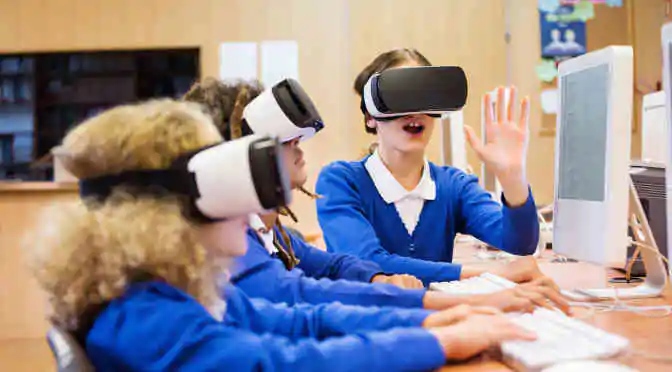Stakeholders in the education system have repeatedly looked for avenues which will make the entire teaching and learning process easy and seamless. The idea is always to raise a generation which is technically better adept to use the intricacies of the latest technologies like to their advantage. And one such technology which has pushed the education sector a notch higher is mixed reality.
Mixed reality – Going beyond the gaming consoles
Virtual reality, augmented reality, and mixed reality are technologies which have changed the face of gaming industry. But talk to any major name in the mixed reality market, and you will realize how the potential of this technology is yet to be explored to its fullest. Apart from gaming, mixed reality can be employed for building better communication networks, entertainment systems, and education programs.
Devices like holoportation employ the mixed reality technology to communicate virtually with users in different parts of the globe. Likewise, HoloLens from Microsoft is diligently working on improving the overall interaction between players and fans, by providing real-time experience of the game to sponsors and advertisers.
Coming to the education sector, Design Intelligence and zSpace have already invested huge capital to build systems and process which will make higher education simplified and reap greater benefits for students, teachers, and other stakeholders in the industry.
Project Esper by 3D4Medical, is perhaps the most suitable example of how education technology can be developed beyond one’s imagination by synergizing the positives from mixed reality technology. By employing augmented reality, researchers have successfully come up with highly detailed and accurate anatomical models. These models can be available to students to simulate dissections right from their dorm rooms, thus doing away with the need of a cadaver in a lab.
Is the world ready for the paradigm shift in its education system?
Stakeholders know that projects like the Esper is just the beginning of a phenomenal change in the educational technology. Yet what really poses a major challenge for most of them is the fact that policy makers in several countries are still not open to the adoption of technology at this greater level – especially in their education systems.
When seen from the point of view of the third world countries, the basic issue over here is still making the basic education system available to the masses. Investment of resources in adopting a technology which demands certain amount of infrastructure in place is not a feasible proposition for them as of now. And for major names in the mixed reality and educational technology, to grow and make an impact, this is one region which cannot be ignored totally.
Another challenge for vendors has been the fact that most of the experiments with virtual and mixed reality in the education sector are still in the project phase. To implement them on a full scale will take a decent amount of time and also require several quality check addressal mechanisms at place.
Therefore, even though our industry experts expect the global mixed reality market in the education sector to grow at a tremendous pace in the next five years, the amount of challenge and hurdles which vendors will face is immense.
The best way forward is perhaps to get in touch with the regional players who already have in-depth knowledge about the local educational system and are in touch with the stakeholders there. This will build a solid ground for further research and investment in the mixed reality market for education system.



